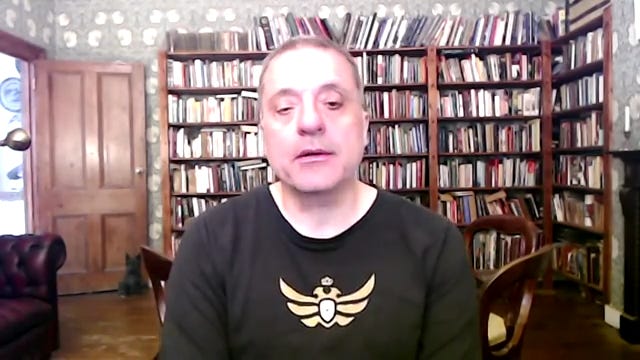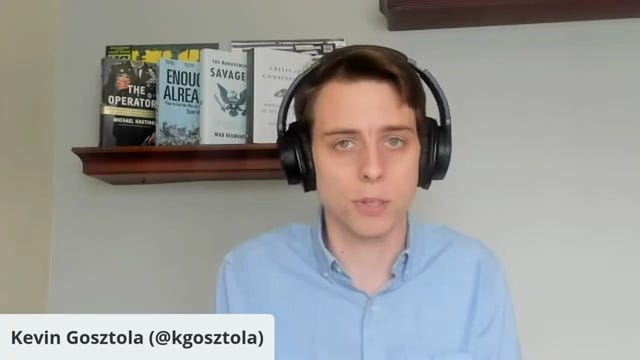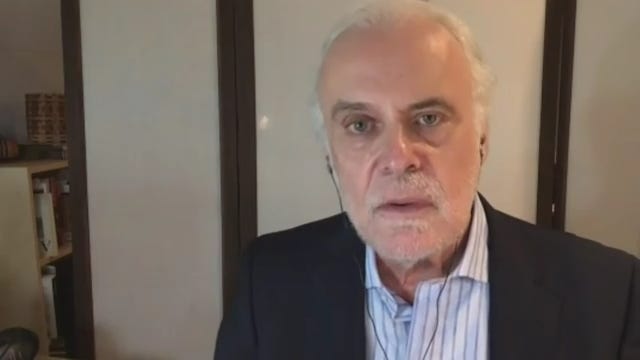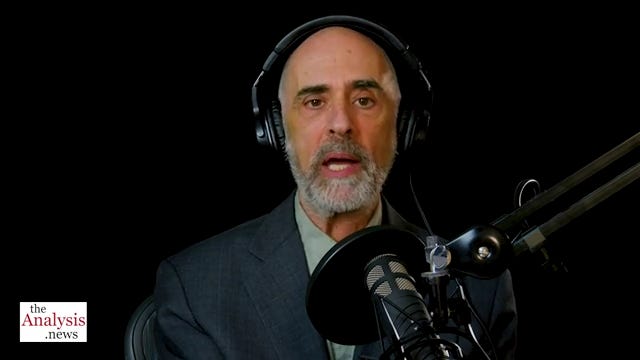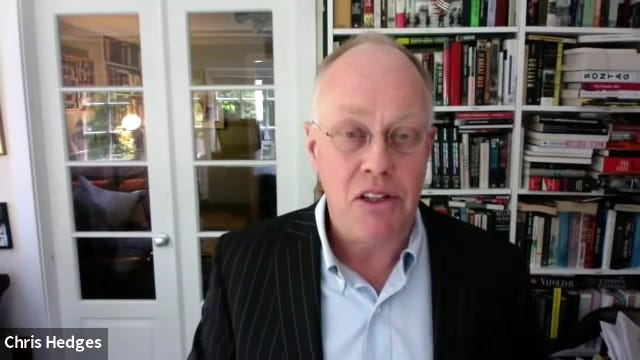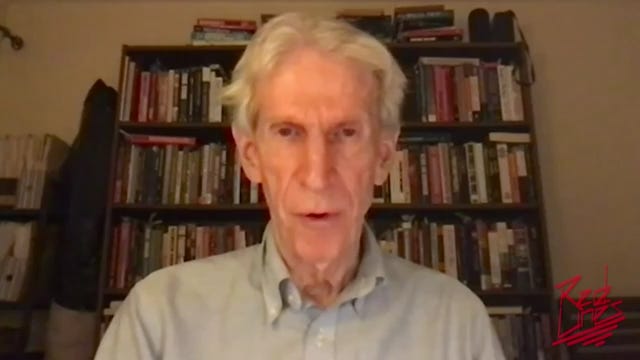Seeing the Background : Channeling Gödel, Escher, Bach
Channeling Gödel, Escher, Bach
Publication date: 2021-09-09
A little thing that has been pecking at the back of my mind are the backgrounds that people choose during video interviews on independent media, both the interviewers and the interviewees.
I have grabbed a bunch of still images from video interviews by people I consider interesting either as interviewers or interviewees in the independent media space and thought I'd ruffle through my subconscious on what the backgrounds are trying to say. Many interesting voices on both sides are not included, else this would go on for ever.
I ask the reader to compare interviewer "sets" with those one sees on large or commercial media. Even more importantly, when we come to interviewee backgrounds, they get to choose this as most interviews are conducted remotely in the independent media. This is quite a flip for them. Instead of boarding some transport to get to the studio and sitting in a "green room" and then sitting in front of whatever the broadcaster wants to put behind and under them, they get to sit in their own space and construct the background. They may well be donating their interview to the "program" but they are given artistic control of the background.
Interviewers / Programs
The order here is about the effort or finance put into the "set", very roughly. This has nothing to do with the quality of the questions or interviews.
Topping the too much effort list, though it looks fine, is Breaking Points. Sagaar and Krystal left The Hill to start their own audience funded news/analysis program. They designed and paid for the set themselves and were so proud of it that they made numerous videos on it, including describing the items in the background and why they are meaningful to each presenter. Books and objet d'art reoccur throughout both the "sets" and the "interviewee" backgrounds.
Next we move to Pushback and Redlines, both by The Grayzone, using a similar theme of a screen advertising the show's name and a bookshelf with various books, and a visible microphone before the interviewer.
While structurally similar each evokes a different mood by the use of different lighting and colours. Perhaps an artist can re-use this article (see licensing; have at it) and do a far better visual analysis that my untrained eye can construct.
Onwards to Jimmy Dore's show, with the microphone, but no background but a blue curtain hinting at his profession as a standup comedian. The main device is the video software production "screen" "device" to his right onto which are projected videos, tweets, article quotes and his interviewed guests.
Alexander Mercouris delivers a geopolitical analysis monologue in what I am certain is his study in his house, with bookshelves in the background. He's a lawyer, and you'de have to expect this. It supports his position well. One may think that the stuffed bookshelves, even with books atop them, is overkill. Not for me. He's a lawyer and student of history. Its his study. Its honest. His (and his wife's) labrador wanders in now and then. The “branding” is by his attire, with the logo for the channel of which Alexander’s program is a part.
Kevin Gozstola's "unauthorized disclosure" uses the bare minimum of background "props", a small bookshelf with selected books displayed. We see "Management of Savagery" by Max Blumenthal, amongst others. Its a sort of declaration of allegiance to exposing the unspoken with still a clean background placing focus on the people engaged in the discussion.
Richard Medhurst uses the wall behind him for popular music posters, with a microphone in front. I think this is an echo of Mercouris from a younger man who has built his own show. He is declaring his youth and musical affinities which are augmented by his fluency in Arabic, English, German and French.
A minimalist would be RJ Eskow's Zero hour, with a paper screen sometimes showing a small bookshelf in the background. All focus is on the persons involved.
The absolute minimalist is Paul Jay who uses the same uniform black background with microphone in front and headphones on as both an interviewer, his dominant role, and interviewee. The microphone and headphones declare a determination for the best audio quality. Jay is a multi-decade long interviewer with the Canadian Broadcasting Corporation and other independent outlets like The Real News (co-founder?). The black background is even supported by audio equipment being black, and his jacket dark. The lighter shirt echoes his whitening beard. The focus is the face and the audio.
Interviewees
So, the interviewees are free to create their own background and free from travel and a general annoyance visiting a studio. You just need a decent camera and microphone.
Again, I will try to order this in more visually complex to less. There is no judgment in this, different interviewees have different reasons for their choices.
We start with Matthew Hoh would has been getting more attention during the USA's uniformed withdrawal from Afghanistan. Just look at the careful construction of his background. On our left is the bookshelf, with what look like two pictures, one of his wedding and another of his children (or other family). Behind is a "Free Assange" poster and below it on the carved cupboard a Buddhist statue with plants to the right and the microphone in the bottom right corner, with dark blue walls behind. Maybe this is naturally his study, but it looks visually constructed to send a message. I think its great.
Col. Lawrence Wilkerson is obviously using his "study" with the background showing family photographs and some military connection (the wooden shield and bell). I think this is rather lovely. He was Chief of Staff to then Secretary of State Colin Powell when Powell delivered the speech to the UN Security Council to advocate for the USA invasion of Iraq. Powell has since declared this his moment of ignominy and Wilkerson has departed the military and become a voice of measured reason. The background echoes this shift, but also his military background.
Behind Danny Sjursen, another ex-military pro-peace voice, we see art. To his right is an obviously anti-military piece. The other's I know not of. Nonetheless, it is constructed, a choice of background with specific elements included.
For Lee Camp its a similar story. The view we see here is one of several that one will see in this room with varying posters behind. This one is most common and seems close to the message Camp is trying to deliver; Jail the War Criminals, and Make Art Not War.
Marxist economist Richard Wolff often appears in an escape/second house with a background of plain walls and a ceiling. Here, behind him is a message. The framed Gilets Jaune (yellow vest) behind is his declaration of solidarity with that movement and his french family. This is obviously positioned. You would never hang that in that position on that wall; it makes no sense but for its position in the video frame. But, proudly displayed it is, declaring his allegiance and solidarity.
We now return to the bookshelf theme with Chris Hedges and Gareth Porter. These are not "constructed", its just their study (or place of work, really). They are writers of books and articles. The bookshelves are messy too; its just real. The message is very, very clear: READ
Now to the minimalist backgrounds for different reasons. Ann Wright (9/11 whistleblower) sits on a lightly coloured couch in light clothes, with light hair in front of a light paper screen blocking the rest of the room which have light walls. From this I sense an element of tiredness. Enough effort is made to give a non-descript image, and thus it can focus on her and her words, but there is also an element of "I've been doing this for more decades than you know". There's a sense of calm determination and an understanding of time.
For Mr McGovern there is still quite the fire in his Irish belly. The choice is minimalist. Dark clothes, white beard (Assange solidarity; he don't need no poster) against a white background as he lays down what he knows with withering dates. There is a little of the Wright sense of the wisdom of age. The focus is, of course, the dialogue.
Lastly, one of the greatest USA whistleblowers that oh so few know about, is the former Technical Director of the NSA, William Binney. I have had the pleasure of researching both his career and activism for close on a decade now. I also had the pleasure of assisting him down a staircase at an event to honor the continued protest against mass surveillance which he (and others) began and Edward Snowden continued.
This absolute minimalist background is certainly not a statement. Its just Bill choosing a background that would give nothing away. That choice echoes his entire struggle to not let the USA's Executive branch rips holes in the Constitution about which he cares so much. He believes in the Bill of Rights and fought against many odds to defend the 1st, 4th and 5th amendments. As he would say, there has been meaning lost in the terms "public official" and "private citizen".
An heroic patriot.
Sources
No sources (words), just images.
Do Not Subscribe: This blog does not and will not ever issue "notifications". Do not "subscribe", it wont help. Use RSS. The URL is the obvious: https://yesxorno.substack.com/feed .
If you like what you read here then thank the author by sharing it.
Copyright and Licensing
This work is copyright to the blog's author with CC BY-SA 4.0 licensing. Have fun, reuse, remix etc. but give credit and place no further restrictions. Lets build culture. https://creativecommons.org/licenses/by-sa/4.0/legalcode







